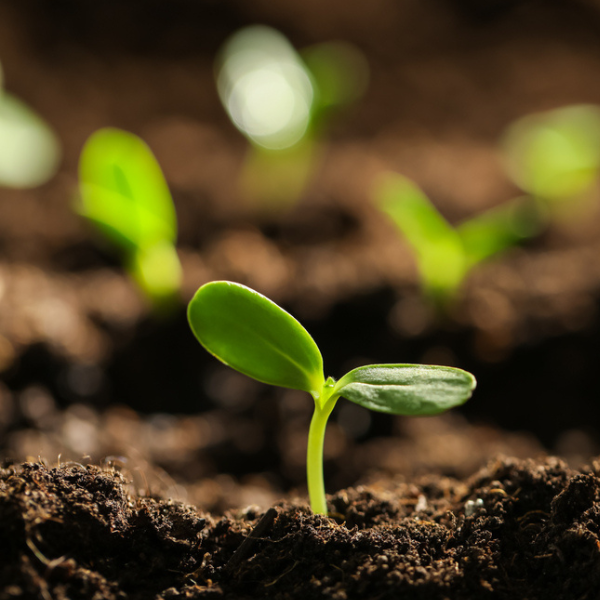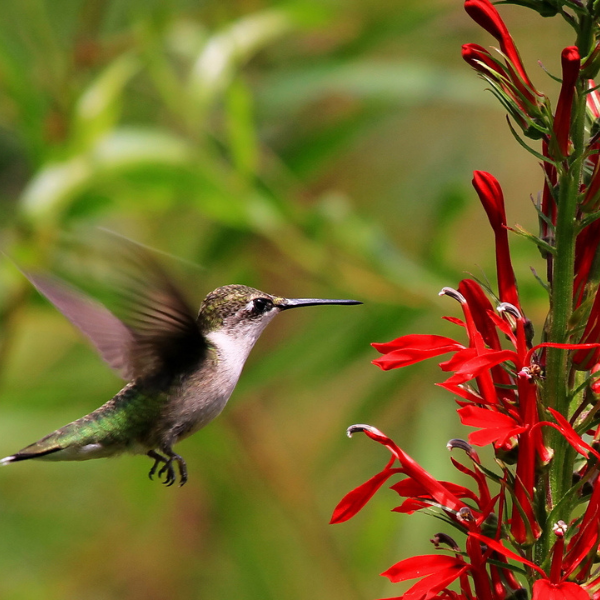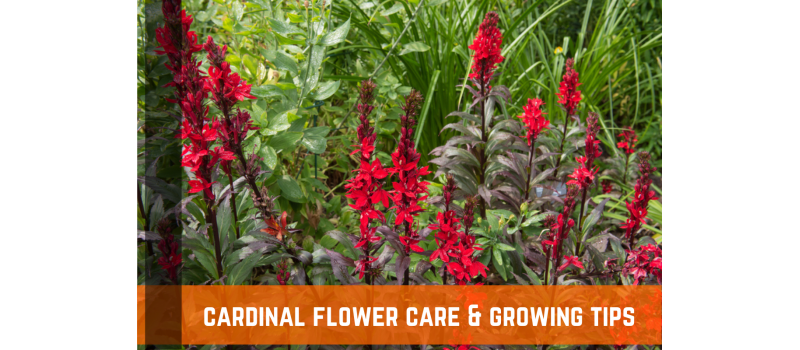The Cardinal Flower is common in North, South, and Central America. It is a natural plant that grows in damp environments such as streams, rivers, and marshes. This natural species bears crimson red blooms, but cultivars with white and pink flowers are also common. All cultivars are good landscaping plants for gardens with damp soil.
Cardinal Flowers bloom for a month or more in late summer, with vivid red blossoms that attract hummingbirds. The parent plant will only last a few years, but this prolific seeder can self-sow in the correct conditions with good seed-to-soil contact. Otherwise, it may need to be replanted every few years, but the work is well worth it.
The Cardinal Flower, like other species in the Lobelia genus, is extremely hazardous to humans and dogs. The plant includes a number of dangerous alkaloid chemicals, including lobeline, which can produce a wide range of symptoms, from stomach disturbance to convulsions and even death in worst-case scenarios.
Cardinal Flower Growing Conditions
Cardinal flowers can be grown in any damp place with full or partial sunlight. Because the cardinal flower grows naturally in wet locations, it is critical to keep the soil damp. Individual plants rarely live for more than a few years, however, colonies can live for many years due to the cardinal flower's self-seeding properties.
It is best to let your Cardinal Flowers self-seed. This ensures that they will return every year. Dividing your plants every two to three years will help them live longer and produce more plants. The Cardinal Flower is free of typical pests and diseases, however the base foliage is occasionally attacked by snails and slugs.
Light
Cardinal Flowers thrive in conditions ranging from full sun to light shade. You should think about your geographic location as well as moisture availability before deciding where to plant it. This species tolerates full light better in moister environments particularly in northern regions. It will thrive in part shade in drier, more southern climates.

Soil
The Cardinal Flower prefers rich, moist-to-wet soil, which causes other plants to rot, yet it struggles in dry, barren soils. Try putting a layer of mulch around your plants to help maintain soil moisture. Soil moisture levels can be improved by amending the soil with a large amount of compost.
Water
This plant requires a lot of water. Cardinal Flowers can withstand seasonal flooding for extended periods of time. Keep a consistent watering routine in place to keep the soil evenly hydrated. If no rain falls during the hot months, heavy watering twice a week may be required. Keep any dogs or pets away from newly planted trees or flowers.
Temperature
Cardinal Flowers can withstand a wide variety of temperatures. It can endure temperatures as low as minus 34 degrees Fahrenheit. Because cardinal flowers prefer wetness, higher humidity levels are preferable; these plants do not thrive in drier conditions.
Nutrition & Fertilizer
Cardinal Flowers, in general, do not require fertilizer all year. Adding compost and organic waste in late winter or early spring will supply the nutrients needed for the upcoming growth season. In most cases, a single application is adequate for good growth.
How To Grow Cardinal Flowers From Seeds
Cardinal Flowers self-seed easily, so simply leaving the seed pods on the plant and letting them fall naturally is one option. Another approach is to harvest the seeds and scatter them after they are mature. Pick the seed pods off the plant once they start to open and gather the seeds.
If you intend to grow seeds inside, allow them to chill for a few weeks in the refrigerator to achieve cold stratification. Fill a container halfway with wet potting mix, sow the seeds on top of the mix because they require light to sprout, water with a spray bottle, cover the container, and place in the refrigerator. Don't let the seeds dry out. In the late winter, remove from the refrigerator and place in a warm position inside under lights.

Common Cardinal Flower Issues
If the leaves of cardinal flowers turn yellow, this could suggest nutrient-deficient soil. A rich compost put around the roots of the plants can be beneficial. Cardinal flower stalks may become too leggy as they search for the sun when grown in shaded situations. In some circumstances, stakes or hoops may be required to maintain the flower stalks against the wind.
Cardinal flower is a short-lived plant that dies back after flowering, although a colony can be sustained by the offshoots that are produced. An old clump, on the other hand, may stretch out and become sparse. Digging up the plant, dividing the crown, and replanting the parts with closer spacing is often the remedy.
Cardinal Flower Toxicity
Cardinal flower is poisonous to dogs, cats, horses, and people. When the alkaloid is consumed, it might result in depression, dilated pupils, diarrhea, tiredness, weakness, vomiting, salivation, and arrhythmia.
Cardinal flowers attract pollinators such as birds and butterflies due to their vibrant colors and tubular blossoms. The blooms are extremely appealing to hummingbirds, and they bloom just as many hummingbird species are migrating.

